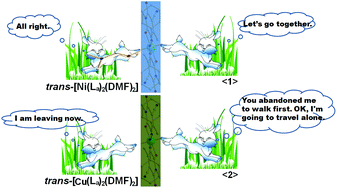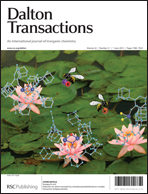Two pairs of 1 : 2 neutral trans mononuclear transition-metal (M = NiII and CuII) complexes of pyridine-2,4-dione and quinoline-2,4-dione based heterocyclic dyes have been structurally and spectrally characterized and compared herein. X-ray single-crystal diffraction analyses of four complexes, namely trans-[Ni(La)2(DMF)2] (1), trans-[Cu(La)2(DMF)2] (2), trans-[Ni(Lb)2(DMF)2] (3) and trans-[Cu(Lb)2(DMF)2] (4), reveal that they have the same trans configuration between the bidentate chelating dianionic ligands and two axially coordinated DMF molecules. Furthermore, a transformation from the hydrazone to azo configuration has been observed for both bidentate chelating ligands La− and Lb− after metal-ion complexation. More importantly, the simultaneous DSC/TG-MS-FTIR method has been used to explore the thermal stability of four neutral metal-complex dyes 1–4, where the two axially coordinated DMF molecules in NiII and CuII complexes exhibit distinguishable decomposition behavior because of their different M–O bond lengths originating from the Jahn–Teller distortions.

You have access to this article
 Please wait while we load your content...
Something went wrong. Try again?
Please wait while we load your content...
Something went wrong. Try again?


 Please wait while we load your content...
Please wait while we load your content...